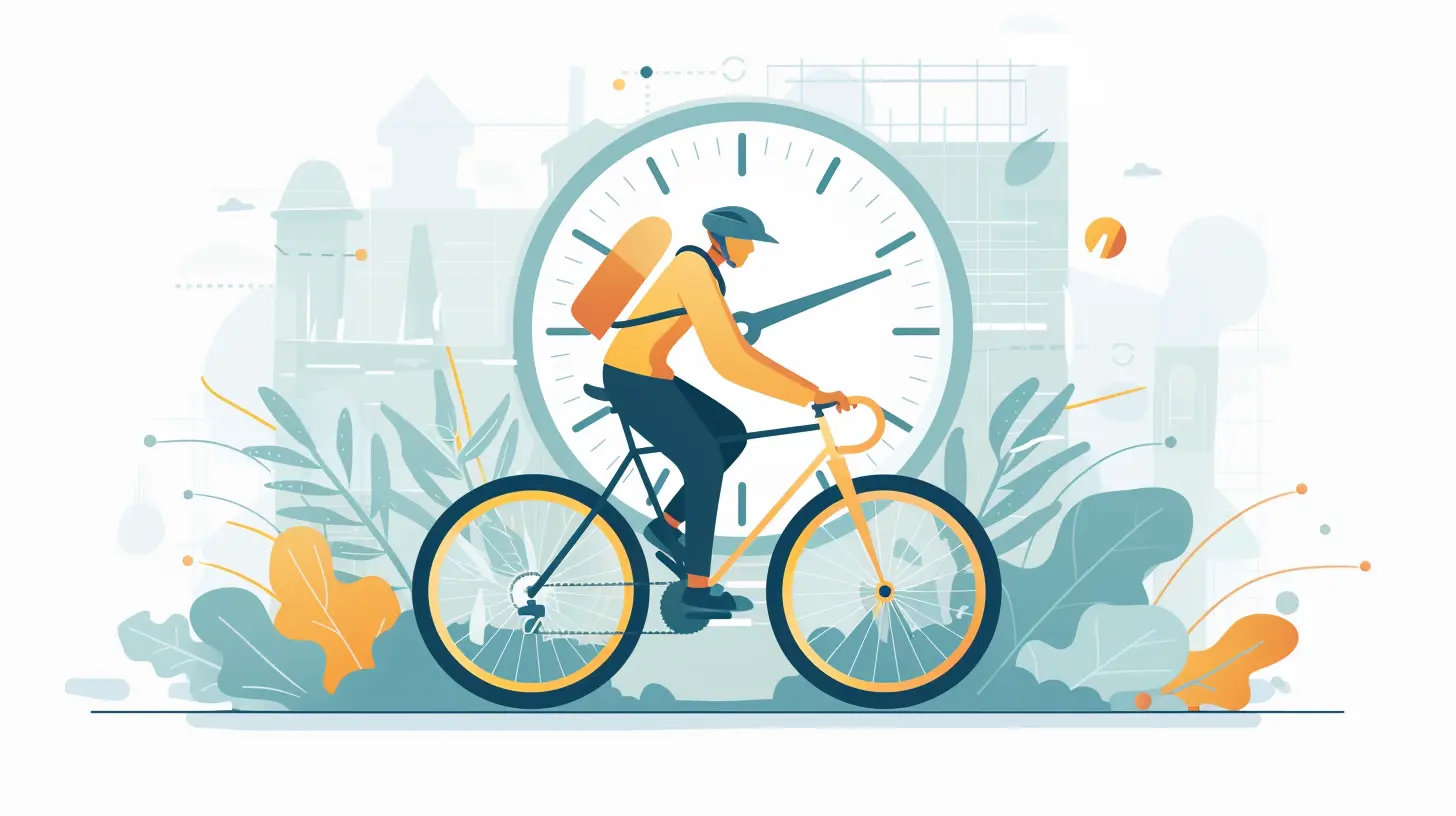How to Manage Time and Balance Cycling with a Busy Schedule
4 June 2025
Cycling is one of the best ways to stay fit, reduce stress, and enjoy the outdoors. But let's be real—juggling work, family, and social commitments makes it tough to squeeze in those rides. If you’re struggling to balance your passion for cycling with a packed schedule, you’re not alone.
The good news? With the right approach, you can carve out time for cycling without compromising other important aspects of your life. Let’s dive into practical strategies to help you stay on the saddle without sacrificing your responsibilities.

Why Time Management Matters for Cyclists
Time is our most valuable asset, and if you don’t control it, it controls you. For cyclists with a full plate, poor time management can lead to skipped rides, decreased fitness, and even frustration. On the flip side, mastering your schedule can transform your cycling experience—making it more consistent, enjoyable, and effective.
Assess Your Current Schedule
Before you make changes, figure out where your time actually goes.- Track Your Daily Activities – Spend a few days documenting how you use your time. You might be surprised at how small distractions add up.
- Identify Time Wasters – Social media scrolling, excessive TV, or inefficient work habits can eat into your riding time.
- Spot Opportunities – Look for time slots where you can fit cycling without disrupting commitments.
Once you understand your routine, it's easier to make adjustments.

Set Clear Cycling Goals
Why do you cycle? Fitness? Training for a race? Stress relief? Having a clear goal helps determine how often and how long you should ride.- If you’re training for an event, structured rides are essential.
- If it’s for fitness, short, consistent rides might be enough.
- If cycling is your escape, flexibility in your schedule is key.
Knowing your ‘why’ will help you decide how much time to dedicate and where to fit it into your day.

Prioritize and Plan Your Rides
Without a plan, life will always find a way to push cycling to the back burner. Here's how to stay ahead:1. Schedule Rides Like Important Meetings
Block out cycling time in your calendar just like you would for work meetings or family plans. Treat it as a non-negotiable appointment.2. Choose the Right Time of Day
Are you an early riser or a night owl? Morning rides before work can be a game-changer, as they leave no room for distractions later in the day. If mornings aren’t your thing, an evening ride can help you de-stress after a long day.3. Use the Commute to Your Advantage
If riding to work is an option—even if just part of the way—it kills two birds with one stone: exercise and transportation. This can save time while keeping your fitness levels up.Make Every Minute Count
When time is tight, efficiency is key. Here’s how to maximize your rides:1. Quality Over Quantity
An intense 30-minute session can sometimes be more effective than a slow two-hour ride. Incorporate interval training or hill climbs to get the most out of short rides.2. Mix It Up
Vary your training sessions based on your schedule. Some days you might have time for a long ride; other days, a quick spin will have to do. Both count!3. Use Indoor Training
A stationary bike or smart trainer is a lifesaver when outdoor rides aren’t feasible. You can fit in a focused workout without worrying about weather, traffic, or time constraints.
Incorporate Cycling into Your Daily Life
Sometimes, balancing cycling with a busy life isn’t about finding extra time—it’s about being creative with the time you already have.- Run errands by bike instead of driving.
- Make it a family activity—ride with your kids or partner to combine cycling and quality time.
- Use lunch breaks for a quick spin if your workplace allows it.
Find a Support System
Having a strong cycling community or a training partner keeps you motivated and accountable. If you struggle with consistency, joining a cycling group can make a huge difference. Even virtual platforms like Zwift provide an interactive experience when solo rides get monotonous.
Be Flexible but Stay Committed
Life happens. Some days, your schedule won’t allow for a ride, and that’s okay. The key is to stay consistent over the long run. A missed session isn’t a failure—just pick up where you left off. Adaptability is part of the balancing act.Manage Recovery and Avoid Burnout
Pushing yourself too hard can backfire. Between work, family, and fitness, burnout is real. Ensure you get enough sleep, eat well, and schedule rest days to recover. Overtraining not only affects your performance but can take the joy out of cycling altogether.
Final Thoughts
Balancing cycling with a busy schedule isn’t about finding extra hours in the day—it’s about making the most of the ones you already have. By planning ahead, prioritizing, and getting creative, you can maintain a consistent riding routine without feeling overwhelmed.Cycling should be enjoyable, not another source of stress. So, take control of your schedule, hop on your bike, and ride towards a healthier, happier you!
all images in this post were generated using AI tools
Category:
CyclingAuthor:

Everett Davis
Discussion
rate this article
2 comments
Matilda McFarlin
Great insights! Prioritizing your passion for cycling amidst a busy schedule can fuel both productivity and joy!
June 10, 2025 at 2:43 AM

Everett Davis
Thank you! Finding that balance is key to staying productive and enjoying what we love. Happy cycling!
Theo McDowell
Great tips! Balancing passion and responsibilities is essential.
June 9, 2025 at 3:47 AM

Everett Davis
Thank you! Finding that balance is key to enjoying both our passions and responsibilities. Happy cycling!


